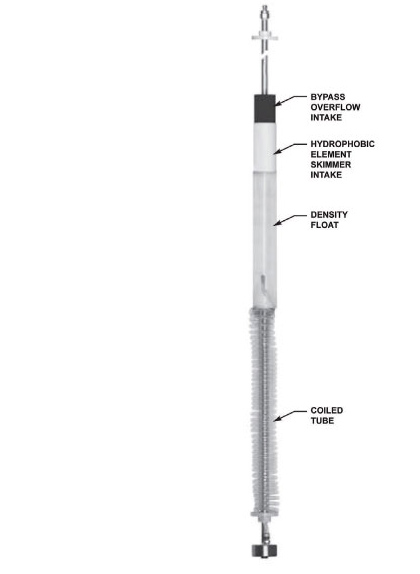Piston pumps replace air lifts at deep gasoline-spill plume to recover product, not water
When a large gasoline spill in the Eastern U.S. produced a toxic plume 140 feet below surface, 11 popular-model air-lift pumps were installed in 4-inch-diameter wells to recover the product. But when the pumps brought up groundwater along with the product, the remediation engineer instead specified Blackhawk electric and pneumatic piston pumps.
The Blackhawks proved to be the only pumps that could reach the depth, pump the product without disturbing the formation (emulsification) and provide controlled drawdown and pump rates, according to the staff engineer for the environmental management and consulting engineering company contracted for the cleanup.
Remediation was accomplished using three Blackhawk Anchor Electric Model 101s modified to be explosion proof at the wells near the double-wall steel tanks used to hold recovered product, plus two Blackhawk V-2 pneumatics and six more Anchor Electric pumps. Each of the pumps was fitted with Blackhawk’s LNAPL recovery tip attachment, which helped keep costs down and recovery rates high. The recovery tip attachment, an automated skimming system for free-product recovery, is designed to recover only hydrocarbon liquids, not groundwater, from 2-inch or larger wells. Using the LNAPL tip with Blackhawk piston pumps resulted in a lower treatment cost for the site engineer because no excess water, which would have to be treated, is extracted with the product.
Initial recovery varied from 1 gallon to 60 gallons of product per day depending on the well and underground conditions. As pumping progressed, wells recovered at an average rate of 28 gallons per day, results that impressed the engineer.

The universal skimmer attachment gently removes a variety of floating viscous products (LNAPL). Multiple skimmers are not needed.
At the start of the project, the gasoline to be recovered lay floating in a 3-foot layer 140 feet below ground where it had percolated down through the soil to the groundwater. More than 52,000 gallons of toxic hydrocarbons were recovered.
Blackhawk’s Anchor Electric and V-2 pneumatic piston pumps are designed with the pump inlet at the bottom of the pump, so that the pump acts like a syringe, extracting product from the bottom of the well and pulling liquid into the pump intake with each stroke.
The pumps’ positive-displacement action resists slowdown or stoppage, even when pumping viscous, sticky or oily liquids. The Blackhawk pumps were easy to install, inspect, trouble-shoot, and maintain, with drive motor and controls above the wellhead.
